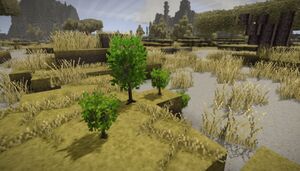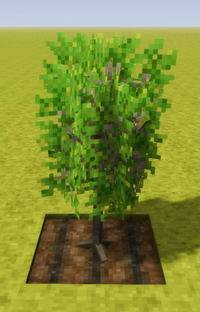Manioc
| Manioc séché | |
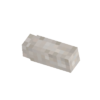
| |
| Empilable | 64 |
| Périssable | |
| Temps de fraîcheur | 1 an |
| Temps de transition | 5 jours |
| Ratio de transition | 0.5 |
| Objets | |
| Cassava | |
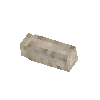
| |
| Empilable | 64 |
| Nourriture | |
| Satiété | 100 |
| Catégorie |
Vegetable |
| Périssable | |
| Temps de fraîcheur | 6 hours |
| Temps de transition | 2 days |
| Ratio de transition | 1 |
| Objets | |
| Raw Cassava | |
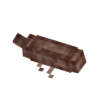
| |
| Empilable | 64 |
| Périssable | |
| Temps de fraîcheur | 28 days |
| Temps de transition | 5 days |
| Ratio de transition | 0.5 |
| Objets | |
Cassava is a source of food. Peeled cassava provides vegetable nutrition, while dried cassava provides grain nutrition. It cannot be eaten raw.
Obtaining
Cassava can appear as a wild crop and are usually found in warm to hot climates. It cannot be bought from a trader or found in cracked vessels.
Cultivation
Cassava grows best between 4 - 44°C, and takes 6.67 months (60 days) to grow at default 9 day per month settings. It goes through 9 growth stages. Cassava uses up 25% K nutrients of its farm plot. Mature cassava can be harvested with an empty hand, knife or scythe. When fully mature, each seed planted in a farm yields one cassava and at least one seed when harvested. Harvesting immature plants yields no crop and may not even provide a seed.
Usage
Unlike most grown crops, cassava cannot be eaten raw or cooked unless it is peeled. To start this process, the raw cassava must be place in a barrel filled with water and sealed for a day. Once the process is complete, the soaked cassava can be peeled by crafting it with a knife of any kind, after which it can be eaten raw or be used in cooking. Peeled cassava is categorized as a vegetable, and can be used as an ingredient in:
- Meat Stew (1-2)
- Vegetable Stew (1-4)
- Soup (1-3)
- Porridge (1-2)
Drying
Peeled cassava will turn into dried cassava after 48 hours in open storage. Dried cassava has a very long freshness timer of 112 days, but cannot be eaten or cooked on its own. Instead, it must be ground into flour using a quern. Cassava flour is treated like any other grain flour, and can be made into bread or cassava ale.
Storage
Once harvested, cassava may be stored in the inventory or stationary containers. Raw cassava also benefits from storage in a cellar. Peeled cassava's fresh lifespan can also be extended with proper storage. Storing peeled cassava in a sealed container such as a ceramic storage vessel will also lengthen the time needed to dry it out.
Notes
Gallery
See also
References
| Agriculture | |
|---|---|
| Aliments sauvages | Baies • Fruit de saguaro • Champignons • Roseaux (et papyrus) |
| Céréales | Amarante • Manioc • Lin • Riz • Seigle • Épeautre • Tournesol |
| Légumes | Chou • Carotte • Oignon • Navet • Panais • Arachide • Citrouille • Soja |
| Fruits | Arbres fruitiers • Ananas |
| Autre | Engrais • Apiculture • Serre |
| Outils | Houe • Faux • Pressoir |
| Voir aussi | Élevage • Cuisine • Préservation des aliments |
| Wiki Navigation | |
|---|---|
| Vintage Story | Guides • Foire aux questions (FAQ) • Vintage Story Original Soundtrack • Versions • Controls |
| Systèmes de jeu | Artisanat • Taille de pierre • Modelage d'argile • Forge • Cuisine • Température • Faim • Minage • Stabilité temporelle • Puissance mécanique • Commerce • Agriculture • Élevage |
| Le Monde | Création du monde • Biomes • Météo • Tempêtes temporelles |
| Objets | Outils • Armes • Armure • Vêtements • Sacs • Matériau • Nourriture |
| Blocs | Terrain • Plantes • Décoratifs • Éclairage • Fonctionnels • Minerai |
| Créatures | Entités hostiles • Animaux • PNJs • Joueurs |
| Miscellaneous | Liste des commandes client • Liste des commandes serveur • Creative Starter Guide • Bot System • How_to_use_WorldEdit • Caméra cinématique • Enregistrement de vidéos à taux variable • ServerBlockTicking |
